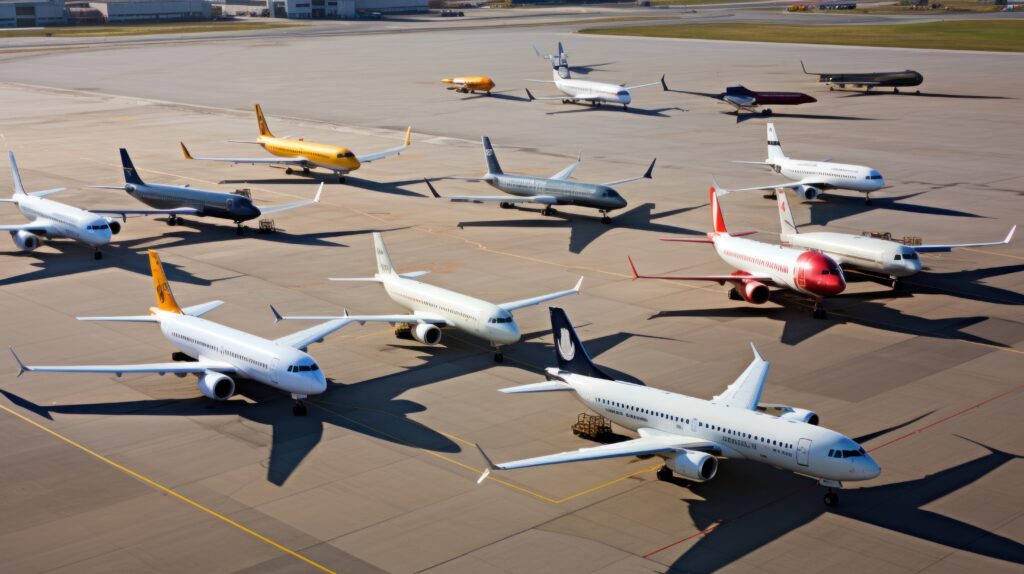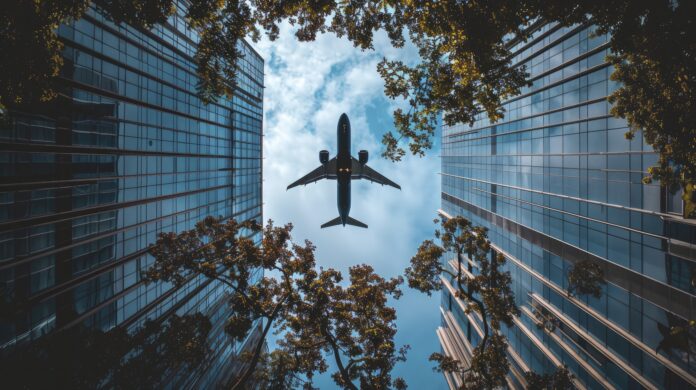By Ameya Joshi

In the 21st century, sustainability has become a key talking point across industries. Industry body IATA (International Air Transport Association) has set itself a Net Zero target for 2050, meaning that there will be no emissions from aviation and every emission will be either offset or the industry will move to cleaner fuels and planes. For aviation, a sector that connects continents, cultures, and economies, the conversation around sustainability is not just timely—it is vital. However, there’s an increasing concern that “sustainability” in aviation is often more of a buzzword than a genuine operational objective. Airlines, airports, manufacturers, and regulators frequently invoke sustainability in speeches, reports, and campaigns, yet the pace of meaningful action often lags behind the rhetoric. If the aviation industry is serious about its future, it must move beyond treating sustainability as a branding tool and embed it as a core operational and strategic value.
The Carbon Dilemma
Aviation contributes about 2–3% of global CO₂ emissions. While this may seem modest, the sector’s climate impact is more significant when accounting for high-altitude emissions and non-CO₂ effects like contrails and nitrogen oxides. Furthermore, the number of air passengers is expected to double over the next two decades, especially in fast-growing markets like India, Southeast Asia, and Africa. Without concrete decarbonization strategies, aviation emissions could triple by 2050, undermining global climate targets, including those laid out in the Paris Agreement.
Despite this looming challenge, aviation’s current trajectory suggests that many stakeholders are content with superficial gestures. Carbon offsetting schemes, one-off sustainable fuel trials, and electric air taxi prototypes grab headlines, but they do not represent systemic change. These initiatives often serve to delay tougher decisions around regulation, taxation, and investment in cleaner technologies.
Greenwashing in the Skies
One of the biggest dangers of the current approach is greenwashing—when companies exaggerate or misrepresent their environmental efforts. Airlines promote their sustainability credentials with flashy advertisements highlighting tree-planting drives or limited biofuel-powered flights. While these efforts may be well-intentioned, they often mislead consumers into believing that air travel is already “green” or soon will be, without acknowledging the immense work still required.

Moreover, sustainability reports issued by aviation companies tend to be vague and unaccountable. Terms like “net zero by 2050” are used without clear intermediate targets or mechanisms. There is often no clarity on how emissions will be reduced versus offset. Many such declarations rely heavily on future technologies, such as hydrogen-powered aircraft or direct air capture, that are still in early stages of development. This techno-optimism must be balanced with accountability and transparency.
Sustainable Aviation Fuel (SAF): Hope or Hype?
One of the most discussed solutions is Sustainable Aviation Fuel (SAF), which can reduce lifecycle carbon emissions by up to 80% compared to conventional jet fuel. However, current SAF production is less than 0.1% of total aviation fuel demand. It is expensive, limited in supply, and requires significant scale-up to become mainstream.
Governments and industry must collaborate to incentivize SAF production through policy tools such as tax breaks, subsidies, and mandatory blending mandates. Airlines must also be more transparent about their SAF usage. Using SAF once for a high-profile flight and marketing it aggressively does little to decarbonize the industry. What’s needed is long-term investment in SAF research, feedstock development, and refining capacity.
The Role of Technology and Infrastructure
Beyond fuel, there is scope for sustainability through improved aircraft technology and air traffic management. New-generation aircraft such as the Airbus A350 and Boeing 787 are 20–25% more fuel-efficient than older models. But fleet renewal is expensive and slow, especially for low-cost carriers and financially stressed airlines.
Optimizing flight routes, reducing holding patterns, and modernizing air traffic control can reduce unnecessary fuel burn. These changes are less glamorous than unveiling futuristic aircraft, but they can deliver immediate benefits. Airport operations also have a role to play—from using electric ground vehicles to installing solar panels and improving public transport access. Governments blocking access to overflying is also one of the areas that contribute adversely to efforts in aviation to move towards green aviation.
Regulation and Collaboration Are Essential
The International Civil Aviation Organization (ICAO) and International Air Transport Association (IATA) have launched initiatives like CORSIA (Carbon Offsetting and Reduction Scheme for International Aviation), but these mechanisms are voluntary or limited in scope. If sustainability is to be more than a buzzword, regulatory frameworks must have teeth. Countries should consider carbon taxes, minimum SAF mandates, and emissions disclosure norms.
Furthermore, cross-sector collaboration is crucial. Governments, fuel companies, tech startups, airlines, and passengers must be part of a coordinated ecosystem. Academic research, civil society advocacy, and public engagement can pressure the industry to act faster and smarter.

Rethinking the Passenger Role
Passengers also play a role. While individual choices can’t solve systemic issues, increased awareness can drive demand for greener alternatives. Travelers should be empowered with transparent emissions data when booking flights and be given options to pay for SAF or choose low-impact routes.
But this requires systemic change in how aviation markets itself. The industry must stop framing all travel as inherently good. It must instead encourage responsible flying, perhaps even promoting slower, multi-modal journeys when practical.
Conclusion: Time for an Honest Takeoff
Aviation’s future depends on how honestly and urgently it engages with the sustainability challenge. Buzzwords, branding, and one-off green initiatives are no longer enough. What is needed is a fundamental shift in how the industry measures success, not just by profits and passenger numbers, but by long-term environmental and social impact.
Moving beyond sustainability as a buzzword means embedding it into core business models, operational decisions, and regulatory frameworks. Only then can aviation continue to grow while preserving the planet and the promise of global connectivity.
Ameya Joshi is an aviation analyst and columnist who runs the analysis website Network Thoughts.


